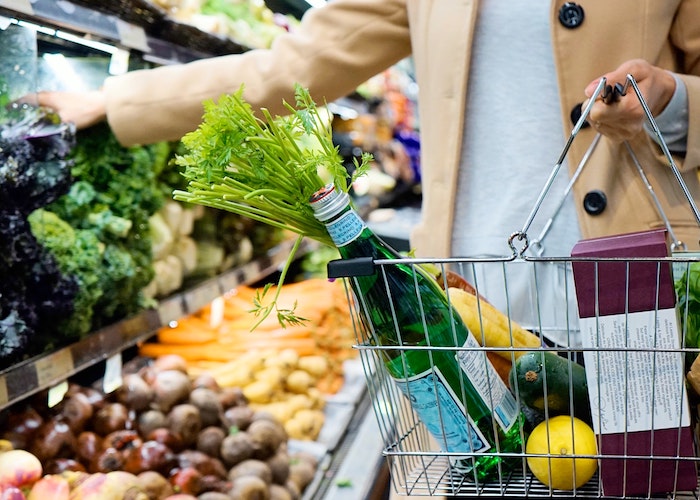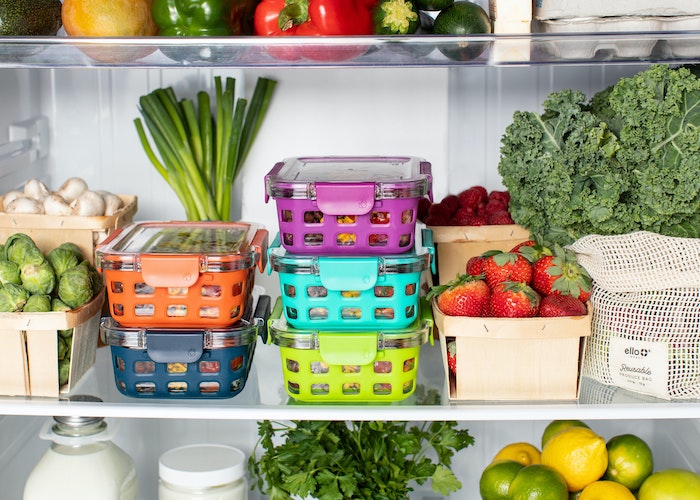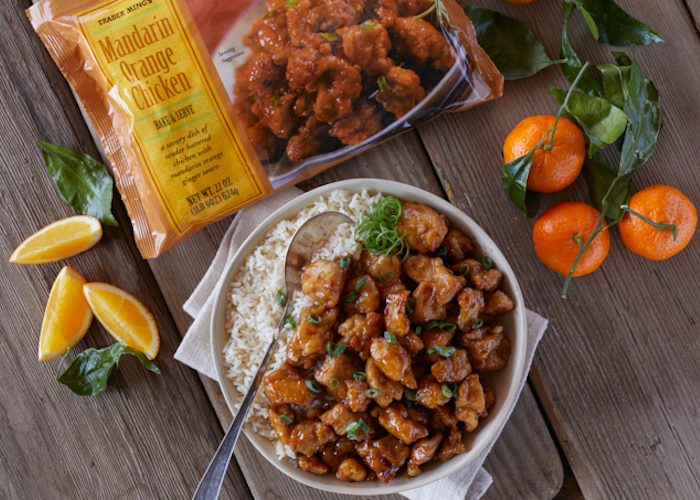6 Kitchen Rules That Keep Me From Over-Buying & Under-Utilizing Groceries

When most people hear “shopping problem,” they immediately think of purchasing luxury items or three pairs of the same shoes in different colors (don’t act like you haven’t done it…or thought about it). They rarely think of the grocery store — it’s a necessity, right!? Well, yes, but it is also just as addictive as Target, especially if you are working to expand your culinary horizons with new recipes and ingredients. If you don’t follow the right kitchen rules, overspending is all too easy
When I got on the paleo wagon (I’ve since adjusted to one foot off), I was buying every cookbook and ingredient possible. Have you ever purchased ghee, or coconut flour? Yeah, they aren’t cheap. But I was doing it for my health, right? I can’t tell you how many lonely pieces of Tupperware with moldy coconut milk died a slow death. I finally got my act together and one) admitted I was out of control in the grocery aisle, and two) convinced myself that no, I did not have to bake more paleo muffins (my waistline thanked me).
I also realized that I had some really poor habits when it came to keeping tabs on what food I had and what I needed. And you know what happens with that? Overspending in the grocery store and a lot of science projects in your refrigerator. So I rolled up my sleeves and committed to creating some new culinary habits and kitchen rules. And guess what? They worked.
Before the grocery store, I started doing three things that made a huge impact:
#1. I planned my meals
I know…this is not rocket science, but you’d be surprised how many of us wing it at the store. When food is starting to go to waste, it is because I’m not planning out my meals appropriately. Doing a meal plan doesn’t have to be an elaborate process. Simply jotting down what you will eat each day and keeping it somewhere visible actually does wonders. AND, if you share meals with someone (partner, roommate, etc.), it’s also a great tool for one person to “get dinner started” if schedules get all wonky…teamwork.
#2. I created a 2x rule
I loved trying new recipes, but my bank account didn’t, because the recipe usually included some weird ingredient that I’d never heard of, which meant I’d only use it once. This tiny habit really contributed to the condiment overflow that was taking over the door of my refrigerator. So I made a new rule: If I wanted to buy a fancy new ingredient, I had to be sure that I used it more than once that week. With this rule, I either discovered more amazing recipes because of the ingredient. Or, I decided that it wasn’t worth the expense. Either way, it’s a money saver.
#3. I started paying attention
I’m not sure when this happened. Somehow I had gotten into a habit of buying enough food to feed a football team when it was just me and my husband. Not only that, I found myself purchasing food that I thought I should like, meaning I never ate it. You know what happens with that combination? You guessed it; lots of food waste. So I started really paying attention and asking myself two questions: How much do I really eat, and what do I actually like to eat? Guys, my food palette is not exciting. So I embraced it and bought what I liked. To spice it up a bit, I would rotate around my recipes for variety (like the chicken enchiladas I’m obsessed with). This was a game changer.
*****
These three simple actions meant I was going to the grocery store knowing how much I ate and what I liked to eat. Newsflash…if you know these things, it’s hard to overspend. But I didn’t stop there. One of my biggest problems was actually eating all of the food I bought, regardless of the amount, because #life. I would end up with sad, soggy carrots because I chose to eat sushi for dinner one night and go to lunch with a friend the next day.
So, after the grocery store, I made it impossible to miss what I needed to eat with these simple tricks:
#1. Keep a Sharpie handy
Just like duct tape or Windex, the Sharpie is one of life’s little wonders, especially in the kitchen. I keep a sharpie in the drawer next to the fridge. Each time I open something and don’t use all of it, I write the date on the top of the lid. No more asking, “Is this still good?”
PRO TIP: Use this for your toiletries and staples. When you buy your face wash or flour, write the date and price on the package with a sharpie. When it’s time to buy again, take note of how long it took you to go through it. Then you can plan this into the appropriate month’s budget.
#2. Make sure you can see it (just like your closet)
This is also known as keeping your fridge organized! I noticed that items would creep to the back of the fridge, and I wouldn’t realize it until it was too late. “Out of sight out of mind” is an understatement in the fridge (that poor little pepper didn’t stand a chance in the back of the crisper). So, I went through my fridge and organized it. Each shelf now contains specific foods, and I try to keep everything towards the front as much as possible.
PRO TIP: If you buy in bulk, but don’t cook it all at once, make sure you use that sharpie and put the expiration date on all of the packages.
#3. Keep an inventory list on your fridge
This trick will also help you with #2. Go old school and keep a list of the food in your fridge, including leftovers, along with the expiration dates. (I don’t include condiments unless they have a steep expiration date — and if you are buying natural foods, yes, they do.) When you use it, bust out that Sharpie and mark it off. It’s a simple way to quickly see what you need to cook or eat before it goes bad and is a simple reminder that…you have food! You can take it to the next level and add the price next to it. It’s a very effective reminder of how much it is going to cost you if you don’t eat what is in your fridge!
PRO TIP: When things start to get close to their expiration date and you know you won’t eat them, think of ways you can cook them that will keep well in the freezer, like casseroles and soups.
*****
I truly believe simple steps and actions are the magic sauce to major change and sticking to your food budget can be a game changer for your bank account and your health.
Brianna Firestone is the founder of The School of Betty, a platform that empowers women to create better relationships with their money, time, and energy so they can build financial freedom and lessen stress. Download her 5 Actions to a Badass Money Relationship here.
Image via Unsplash
Like this story? Follow The Financial Diet on Facebook, Instagram, and Twitter for weekly tips and inspiration, and sign up for our email newsletter here.




